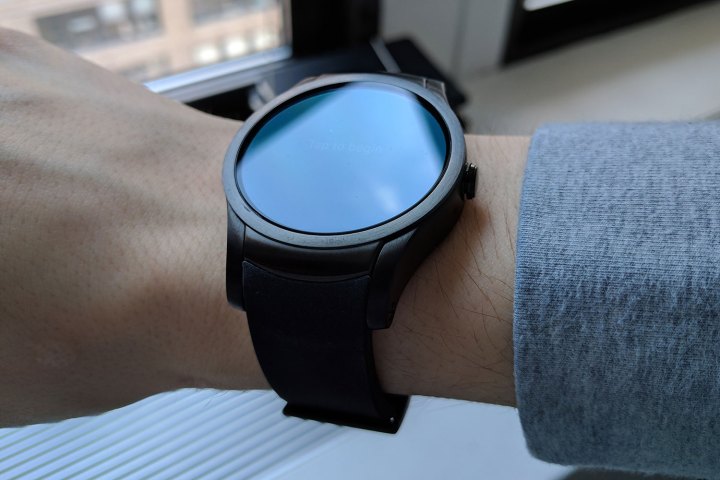
The Wear24 was made in partnership with original design manufacturer Quanta, a Taiwanese company better known for its branded laptops, desktops, and media players. It was a Verizon exclusive and one of the first smartwatches to ship running version 2.0 of Google’s Android Wear operating system.
The Wear24 started at $300 on a two-year contract or $350 at full price (if you try to navigate to the watch’s product listing, you’ll be redirected to a support page.).
The Wear24 had the makings of a compelling package. Its “slim and modern” 13.5mm body is IP67-rated, meaning it could withstand up to 3.3 feet of water for up to 30 minutes. And under the hood was 768MB of RAM, a beefy 450mAh battery compatible with off-the-shelf wireless chargers, and a 1.39-inch AMOLED display with 290 pixels per inch. It boasted full compatibility with Verizon’s LTE network too, meaning the Wear24 could make and receive phone calls and texts without the need for a smartphone.
Thanks to Android Wear 2.0, the Wear24 shipped with loads of useful features. New watch faces boasted “Complications,” miniature widgets for notifications and shortcuts for apps that put upcoming calendar appointments, fitness goal progress, and more at a glance. A new version of Google Fit, Google’s cross-platform fitness tracker, used the Wear24’s built-in GPS to track your pace, distance, and the calories you’ve burned during workouts. And new messaging features let you respond to texts and messages with a keyboard.
One of the bigger additions was the Google Assistant, cloud-powered AI software capable of performing actions like setting reminders, finding directions to a specified point of interest, telling you the weather, booking a restaurant, and more.
Unfortunately, the Wear24 didn’t support Android Pay, Google’s contactless touch-to-pay platform. The smartwatch had an NFC chip, but Verizon opted to disable it.
In our review of the Wear24, we were disappointed its lack of heart rate sensor, cheap wristband, and poor speaker quality. It couldn’t quite measure up to similarly priced alternatives like the Huawei Watch 2 Sport, which has a better screen, and the LG Watch Sport, which had a functioning NFC radio.
The Wear24 was compatible with its $10 Single Device Plan, which provisions 1GB, unlimited talk, and unlimited text for a connected device. Alternatively, existing subscribers could add the Wear24 to their plan for an extra $5 per month.
Update: We’ve updated the article to reflect the Wear24’s discontinuation.


